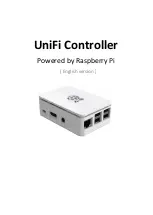Preface
MPC5565 Microcontroller Reference Manual, Rev. 1.0
Freescale Semiconductor
21-27
FlexCAN also supports an alternate masking scheme with only three mask registers (CAN
x_
RXGMASK,
CAN
x
_RX14MASK, and CAN
x
_RX15MASK) for backwards compatibility. This alternate masking
scheme is enabled when CAN
x
_MCR[MBFEN] is negated.
Refer to
Section 21.3.3.4, “RX Mask Registers
21.4.3.3
Self Received Frames
FlexCAN2 receives frames transmitted by itself if there exists an RX matching MB, but only if an ACK
is generated by an external node or if loop-back mode is enabled. Note also that FlexCAN does receive
frames transmitted by itself if there exists an RX matching MB, provided the MCR[SRXDIS] bit is not
asserted. If SRXDIS is asserted, FlexCAN will not store frames transmitted by itself in any MB, even if it
contains a matching MB, and no interrupt flag or interrupt signal will be generated due to the frame
reception.
21.4.4
Message Buffer Handling
To maintain data coherency and FlexCAN2 proper operation, the CPU must obey the rules described in
Section 21.4.2, “Transmit Process
Section 21.4.3, “Receive Process
.” Any form of CPU accessing a
MB structure within FlexCAN2 other than those specified can cause FlexCAN2 to behave in an
unpredictable way.
Deactivation of a message buffer is a CPU action that causes that MB to be excluded from FlexCAN2
transmit or receive processes during the current match/arbitration round. Any CPU write access to a
control and status word of the MB structure deactivates that MB, excluding it from the current RX/TX
process. However, deactivation is not permanent. The MB that was deactivated during the current
match/arbitration round will be available for transmission or reception in the next round.
The purpose of deactivation is data coherency. The match/arbitration process scans the MBs to decide
which MB to transmit or receive. If the CPU updates the MB in the middle of a match or arbitration
process, the data of that MB may no longer be coherent, therefore that MB is deactivated.
Match and arbitration are one-pass processes. After scanning all MBs, a winner is determined. If MBs are
changed after they are scanned, no re-evaluation is done to determine a new match/winner; and a frame
may be lost because the matched MB may have been deactivated. If two RX MBs have a matching ID to
a received frame, then it is not guaranteed reception if the user deactivated the matching MB after
FlexCAN2 has scanned the second.
21.4.4.1
Notes on TX Message Buffer Deactivation
There is a point in time until which the deactivation of a TX MB causes it not to be transmitted (end of
move out). After this point, it is transmitted but no interrupt is issued and the CODE field is not updated.
If a TX MB containing the lowest ID (or lowest buffer if LBUF is set) is deactivated after FlexCAN2 has
scanned it while in arbitration process, then FlexCAN2 can transmit a MB with ID that may not be the
lowest at the time.
Summary of Contents for MPC5565
Page 18: ...MPC5565 Microcontroller Reference Manual Devices Supported MPC5565 MPC5565 RM Rev 1 0 09 2007...
Page 34: ...MPC5565 Reference Manual Rev 1 0 Freescale Semiconductor 15...
Page 35: ...MPC5565 Reference Manual Rev 1 0 16 Freescale Semiconductor...
Page 553: ...Flash Memory MPC5565 Microcontroller Reference Manual Rev 1 0 13 38 Freescale Semiconductor...
Page 559: ...SRAM MPC5565 Microcontroller Reference Manual Rev 1 0 14 6 Freescale Semiconductor...
Page 973: ...Preface MPC5565 Microcontroller Reference Manual Rev 1 0 21 36 Freescale Semiconductor...
Page 1153: ...Calibration MPC5565 Microcontroller Reference Manual Rev 1 0 B 8 Freescale Semiconductor...


















